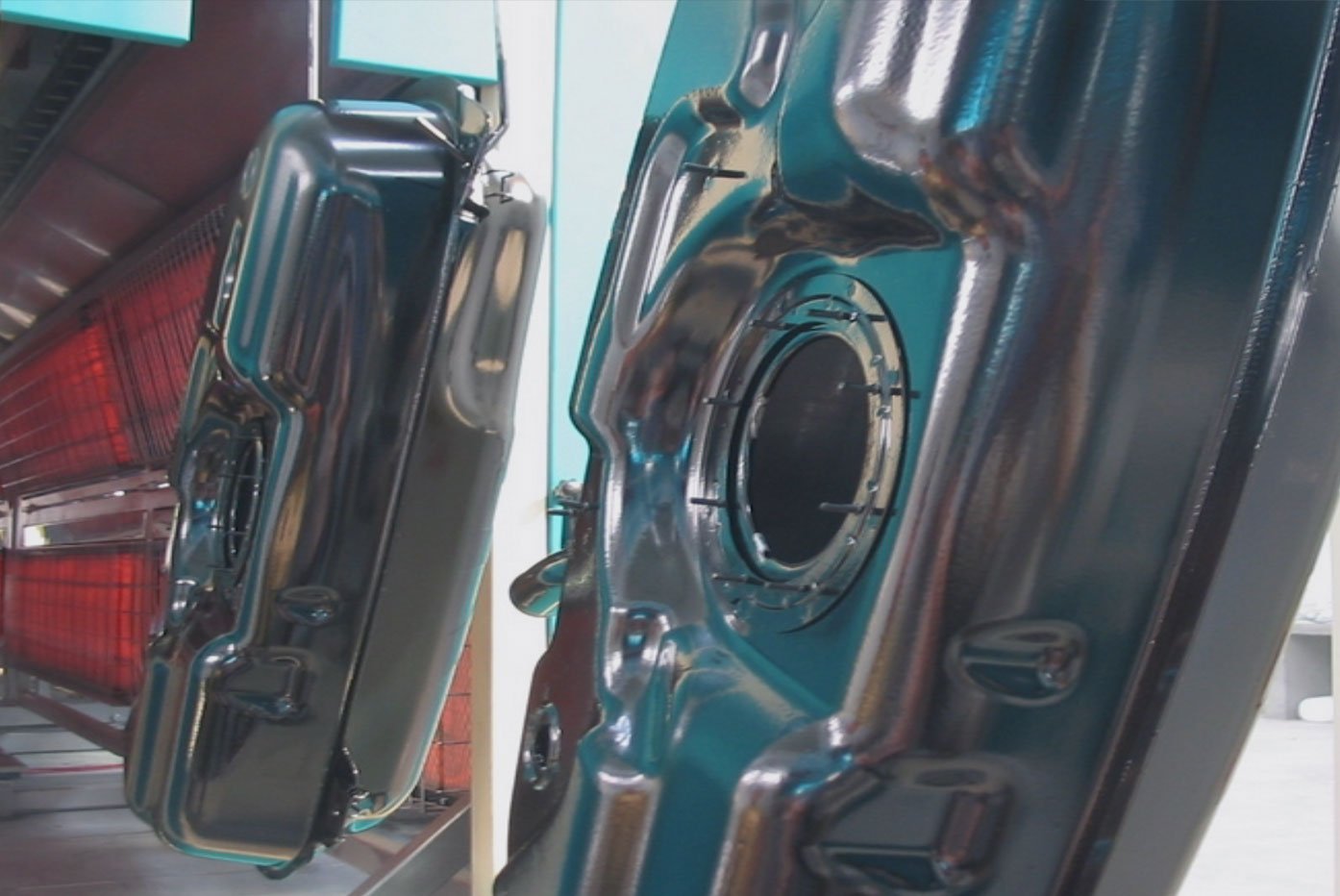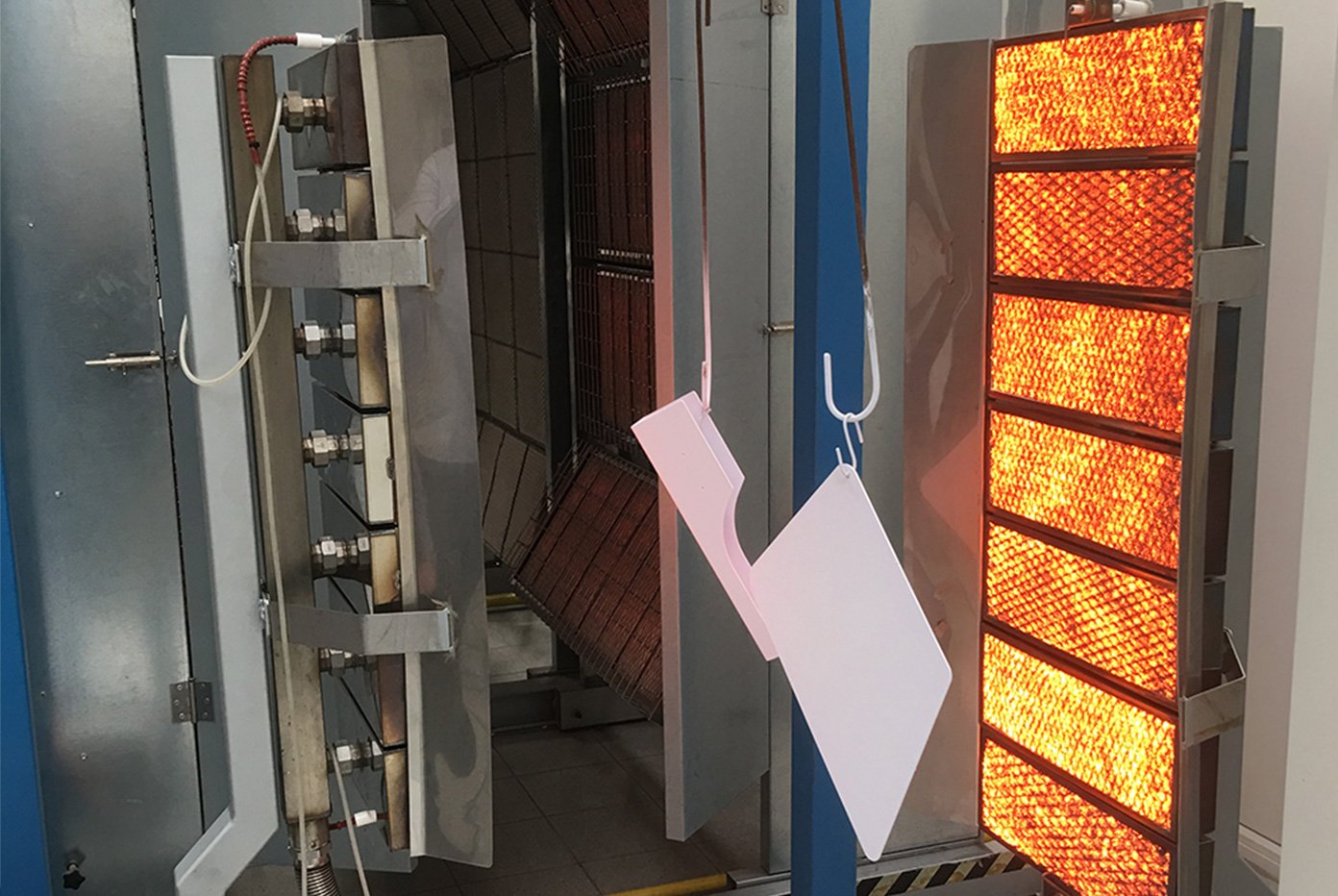How does it exactly work?

Every object with temperature above absolute zero emits infrared energy.
The object that radiates more energy is defined as the “emission source”, while the object to which it radiates heat is the “target”: Stefan-Boltzmann law about infrared radiation specifies that when the temperature of an emission source is increased, a much greater percentage of the total energy output is converted into radiant energy.
The consequence is a high power density, that is an incredible capacity of transforming energy into heat with costs and time savings.

The temperature of a heat source determines the wavelength of that source: if the temperature increases, the wavelength shortens.
The radiation of INFRAGAS® systems has different wavelengths obtained by modulating the catalytic surface temperature. Therefore, infrared heaters are suitable for different applications considering that they have medium-long wavelengths.
Infrared energy is divided in three wavelengths categories, measured in micron (µm):
| Short waves: | from 0,8µm to 2µm |
| Medium waves: | from 2µm to 4µm |
| Long waves: | from 4µm to 10µm |
Short Waves
Experience made with IR energy employed in the thermal treatments sector, demonstrates that the heating obtained with emission of short waves has a high penetration through the objects: therefore, short waves have the tendency of passing through the matter by heating preferably the inside part of the bodies and not the surface.
Medium Waves
reach the exposed objects to be treated without penetrating them, they act only on the surface layers. Consequently, they are suitable for liquid and powder paint curing, in multiple drying processes on different substrates such as metal, fabrics, wood, glass and many others.
MEDIUM/LONG ELECTROMAGNETIC WAVES
Infragas® infrared heaters emit MEDIUM/LONG ELECTROMAGNETIC WAVES, therefore they cover a wide range of thermal processes. They are specifically designed for applications requiring homogeneous treatments, of a high quality level. In addition, the management costs are extremely low as the heating speed and the typology of thermal process, focused on the item to be treated, enable an important reduction of time and energy.
Long waves
have a low penetration capacity, therefore they are particularly indicated in those treatments where a slight heat penetration is desired or in presence of items with high thermal sensitivity (for example plastic, wood, food products, etc.).
It is very important that the emission source develops the correct wavelength for the coating or the substrate to be treated. The right choice of the source determines the efficiency and speed of the process.
IR SPECTRUM


Choose the right source of emission
for the effectiveness and speed of the process
Infragas® radiant heaters emit a range of electromagnetic waves whose length is perfectly absorbed from the most part of organic products. In powder coating sector, for example, infrared energy is perfectly absorbed in polymerization phase, while in treatments with traditional paints, Infragas wavelength enables the rapid evaporation of water and solvents and a homogeneous finishing of high quality without generating thermal stress in the treated substrate.
The RHT- Radiant High Temperature units emit infrared short wavelengths and they are specific for thermal processes that require high temperature, such as the moulds heating, or quick thermal processes such as powder melting on metal items.
To know more
INFRARED RADIATION
Infrared radiation (IR) is electromagnetic radiation with a wavelength greater than visible light, but less than radio waves. The name means “under the red” (from the Latin infra, “below”), because red is the visible color with the lowest frequency.
ABSOLUTE ZERO
Absolute zero is the lowest temperature that can theoretically be obtained in any macroscopic system, and corresponds to zero Kelvin, 0 K (-273,15 °C; -459,67 °F).
micron (µm)
A unit of length that is one millionth of a meter (or one thousandth of a millimeter).
STEFAN-BOLTZMANN LAW
The Stefan-Boltzmann law, sometimes called Boltzmann’s law or even Stefan’s law:
where q is the energy radiated by the surface unit in the unit of time, T the absolute temperature expressed in kelvin and σ is the Stefan-Boltzmann constant which is:
